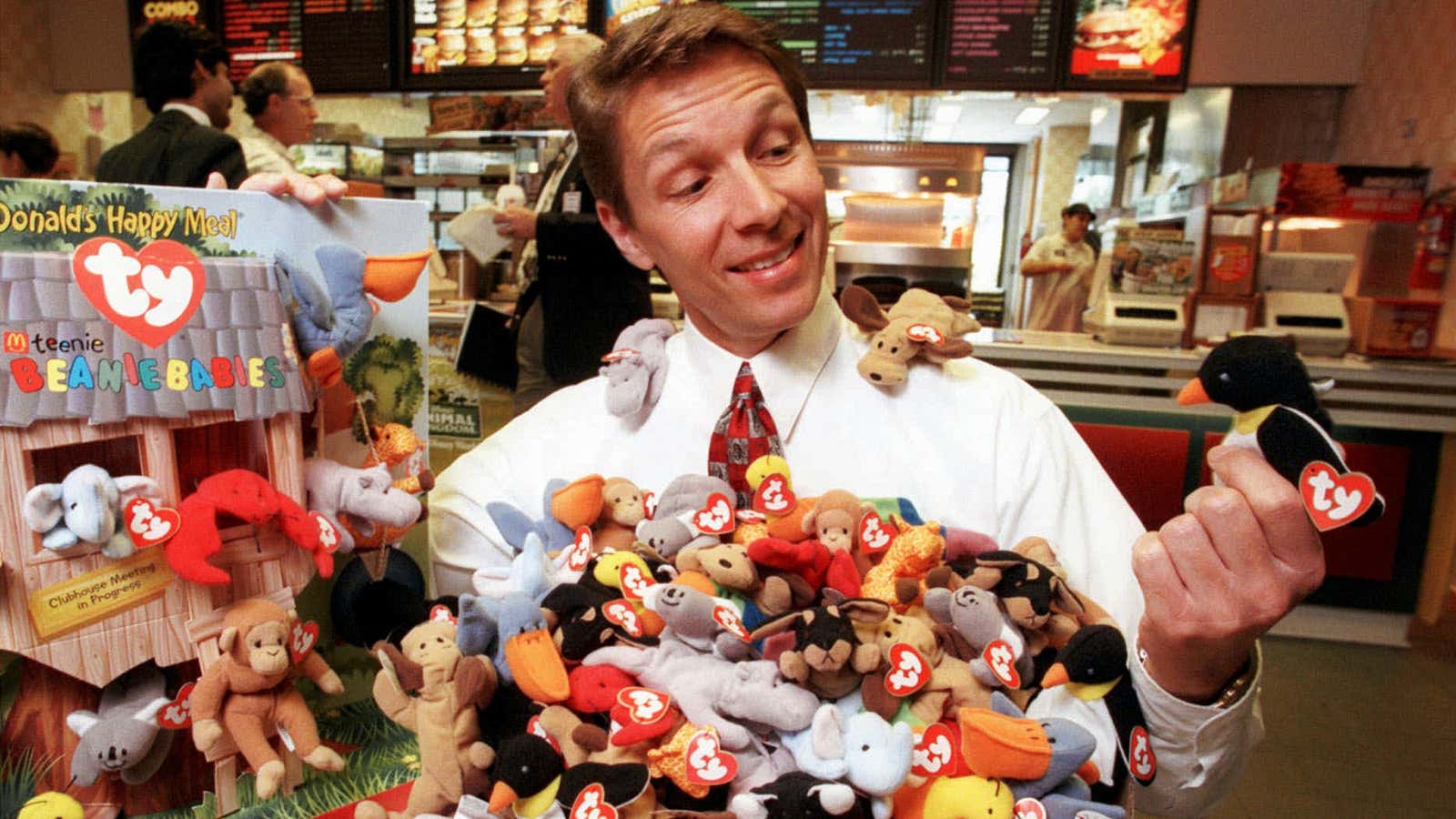When Chris Robinson’s father started collecting Beanie Babies, he thought he could use the eventual profits to pay for five college tuitions. Instead, he ended up spending upwards of $100,000 (Robinson’s estimate, based on average cost for each) for a collection of 20,000 stuffed animals that still sit in his garage.
It’s been 20 years since the initial Beanie Baby craze, when the palm-sized plushies were found in McDonalds and Hallmark stores across the globe. Touted as collectibles, the toys saw a meteoric rise and dismal drop in pricing that has drawn comparisons to Dutch tulip mania, the very first recorded economic bubble . The success of the craze is evident in Beanie Baby inventor Ty Warner, whose net worth is $2.5 billion.
Today, in an interview with Marketplace Morning Report, Robinson, who directed a short documentary called “Bankrupt By Beanies” several years ago, recalled his father’s introduction to Beanie Baby mania. His little brother, he said, saw one in a store and wanted to play with it. “The store owner told my dad that they were going to be worth a lot,” Robinson said, “and that these ones were really rare, so he kind of took that to heart and went a little crazy.” When Robinson’s father began reading collectors’ manuals, which projected high future value for the toys (after all, at the time many of the rarer models could be purchased for $5 and then sold for 10 times as much), he decided that collecting and selling Beanie Babies could pay for his sons’ college tuition. Here’s the documentary:
For years, the Robinson family was “consumed” by the hunt for Beanie Babies. With a collection for each of the five sons, Robinson’s father would spend weekends recruiting anyone he could—his kids, neighborhood kids, and even friends of his wife—to buy new releases for him. Since shops often limited each family to one purchase, he would warn his sons to pretend not to know one another in the store. Once they were home, days were spent cataloguing and packaging the Beanie Babies, which he organized by species and color in plastic cases. “He described it as kind of like a drug addiction,” Robinson told Marketplace.
In his documentary, Robinson’s mother says that the idea wasn’t a bad one—but that like those Dutch tulip merchants, the Robinsons failed to cash out in time. For about the first six months, she says, they could have made a nice profit. But they missed that window. “When we first started collecting them,” She said, “we knew that they were valuable, because they were kind of at their peak—but we didn’t know that part.”
Now, even though the children who actually played with Beanie Babies are now young adults ready to drop some cash on nostalgic memorabilia, prices are still low—many of the plushies sell for less than their original price, and only very few sell for anything close to the thousands that were expected. Baldy the Eagle, a plush that was supposed to be extremely rare, is selling on eBay for only a few dollars—and the Robinsons have 50 of them.
Robinson’s father is still holding onto his collections in case they come back around, and plans to pass them on to his sons either way. Maybe the market will pick back up again—but it’s more likely that his grandchildren will each get a couple thousand Beanie Babies for their first birthdays.
